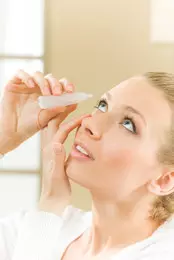
Blepharitis is a common eye condition in older adults. Many millions of people have this common eye condition, and it very rarely causes any lasting effect on vision. You may have experienced some of these signs and symptoms:
- Redness of the eyelids
- Swelling and tenderness of the eyelids
- Itching around the eyelashes
- Greasy flakes around the eyelashes
- Hard crusts at the base of the eyelashes. These crusts may cause the eyelashes to fall out.
Once you have this condition, it will tend to recur. Physicians do not have a cure for this condition, but it can be controlled, and we can help you to live more comfortably with its symptoms.
Cause
As your eyes become drier over the years, the oil glands at the base of your eyelashes become overactive and secrete excess amounts of oil. This causes irritation to your eyes and results in the symptoms listed above.
Treatment
Although no cure exists, some over-the-counter (non-prescription) treatments may help relieve your symptoms:
- Eyelid scrubs: Clean eyelids, per instructions
- Hot compresses: Apply per written instructions from your eye doctor
- Tear drops: Use Refresh Plus as many times as needed (you cannot overuse them)
- Refresh PM ointment: Apply to the eye (1 small dot only) at bedtime; vision will blur the next day if overused
If blepharitis is not treated promptly, it can lead to a cyst (an inflammation of an oil gland on the eyelid) or a stye (an infection at the base of an eyelash). You might try several combinations of treatments before finding a solution that works best for you. If these over-the-counter treatments do not ease the condition, your ophthalmologist may prescribe antibiotic drops and/or ointment for temporary use. Occasionally, patients need oral antibiotics for temporary use.
Please call Saddleback Eye Center if you need additional help.


